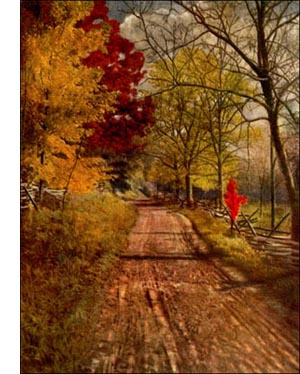Yellow Wood or Virgilia Tree
 The Yellow-wood, or Virgilia (Cladrastis lutea, K. Koch.), is native to the limestone hillslopes of Tennessee, Kentucky and North Carolina, but even here it is very rare. It is cultivated, however, and good specimen trees may be seen in nurseries and in private grounds in the East. It is hardy as far north as New England and Ontario, and is one of the most desirable native ornamental trees.
The Yellow-wood, or Virgilia (Cladrastis lutea, K. Koch.), is native to the limestone hillslopes of Tennessee, Kentucky and North Carolina, but even here it is very rare. It is cultivated, however, and good specimen trees may be seen in nurseries and in private grounds in the East. It is hardy as far north as New England and Ontario, and is one of the most desirable native ornamental trees.It is a small tree, rarely reaching So feet in height, with wide, graceful head of slender, pendulous branches, grey bark as smooth as that of a beech, and four little winter buds enclosed in the hollow base of each leaf stem. The leaves are compound, a foot long, of seven to eleven oval, broad leaflets, diminishing in size toward the base, pale beneath, and turning a clear yellow in the autumn.
The flowers are large, white, pea-like, fragrant, and borne in drooping, terminal clusters, often a foot long. The pods are thin, smooth, few-seeded. Virgilia is the garden name of this tree. It is called so in the nursery catalogues. The wood is yellow, and its sap yields a dye of that colour.
These are the botanical characters of the yellow-wood. One can easily identify it. But to remember the tree, to have it indelibly impressed upon the memory, one must see it in blossom. It is a "shy bloomer"; at least it never blooms in two successive years, and rarely does it cover itself with flowers oftener than twice or three times in a decade. That is quite enough to justify planting it as a lawn tree, with evergreens for a background -a frame for the picture when it comes.
The virgilia is always beautiful. But in wealth of bloom, as I saw it in the gardens and parks about Boston in the summer of 1904, it surpassed all other trees. Every twig ended in a long, loose raceme in which each pure white blossom had room to reach its full development-to get its fill of light and sun and air. The weight of the flowers made every twig bend outward and downward. Each tree was overspread for days with this marvellous veil of white, and out of each came all day long the low murmur of contented bees.
The tree is rare and local, hanging over mountain streams and edging the woodlands of its range, the highlands of western North Carolina, eastern Tennessee, central Kentucky and northern Alabama. Its beauty is much enhanced by cultivation. The handsome foliage turns yellow before it falls, and all through the summer and on through the autumn the pendant clusters of dainty pods are highly ornamental.
The virgilia has no bad habits; it is hardy in the climate of Boston; it thrives in many different soils; it is easily propagated by seeds or root cuttings; it is a handsome lawn or park tree at any season of the year. It ought to be in gardens up and down the land-increasingly planted wherever a beautiful native tree is desired and appreciated.